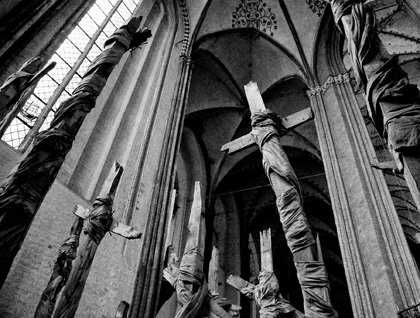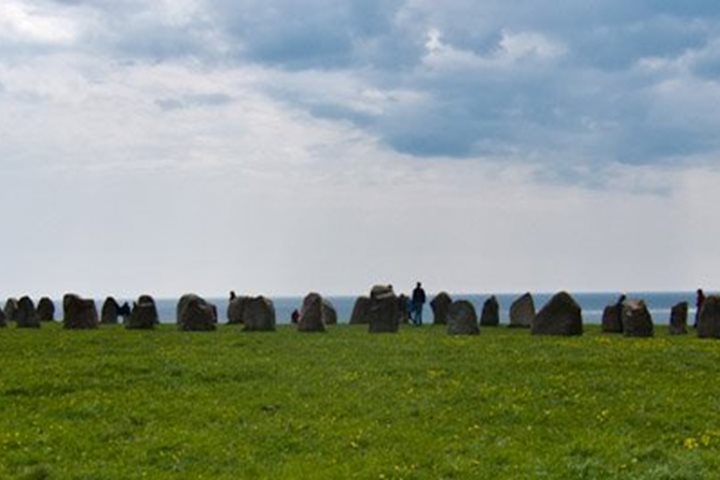After a day at sea in which we transited the Kiel Canal from the North Sea to the Baltic, early morning saw us enter the mouth of the River Trave at Travemünde and make our approach upstream to the miraculously preserved mediaeval city of Lübeck, the “Queen” of the Hanseatic League cities. From the thirteenth to the sixteenth centuries, the Hanseatic League dominated trade in northern Europe. The etymology of the word “hansa” is obscure but refers to a guild of tradesmen who functioned in a manner that presages today’s European Union, a trading community well-regulated by committees but never fully functioning as a political entity in its own right - which is not to say that it could not be highly effective in defending its interests, as in 1361 when the Hansa traders of Visby successfully withstood a siege from King Valdemar of Denmark.
Lübeck sat at the heart of a network of mercantile cities and (lesser) kontors that linked Bergen in the north with Bruges in the south and London (Steelyard) in the west with Novgorod in the east. Lübeck was centrally situated and had access to salt, the “white gold” of the middle ages, used for salting herring and codfish to be exchanged for finished cloth from the south and beeswax and hides from the east. Like the Vikings whom they replaced, following the conversion of these northern peoples to Christianity by the Teutonic Knights, the Hansa traded up the great river systems of Eastern Europe bringing sugar, almonds, rose water and cinnamon from the Levant. Lübeck is still famous today across Europe for the quality of its marzipan made with imported almonds and sugar spices, a reminder of historic Hanseatic trade.
We began our day with a canal boat tour that splendidly revealed the outline plan of the Hanseatic city, protected from coastal raiders by its upstream location and further protected by a circular canal system acting as a moat. From the canal, as we circumnavigated the city, we could see a wealth of brick-built church buildings, their spires also serving the very practical purpose as navigation markers. Characteristic Hanseatic warehouses lined the waterfronts, including the splendid slat warehouse beside the Holstentor, built to defend the land entrance to the city from the Danes. The tour set the scene for similar tours of Baltic Hanseatic cities still to come on the trip.
A highlight of the morning was the visit to St. Mary’s church, lovingly restored after damage from British bombing in the closing months of the Second World War. In the afternoon, one option was to ascend (by elevator!) to the top of St. Petri’s church which has a viewing platform that affords an aerial view of the mediaeval city. The threatened rain held off until all were safely back on board; some from a nature walk along the riverside paths, others combining photography with the sensory delights of the world famous Café Niederegger which happened to be displaying a large-scale model of a Hanseatic cog, their commodious trading vessel, made entirely of marzipan.









